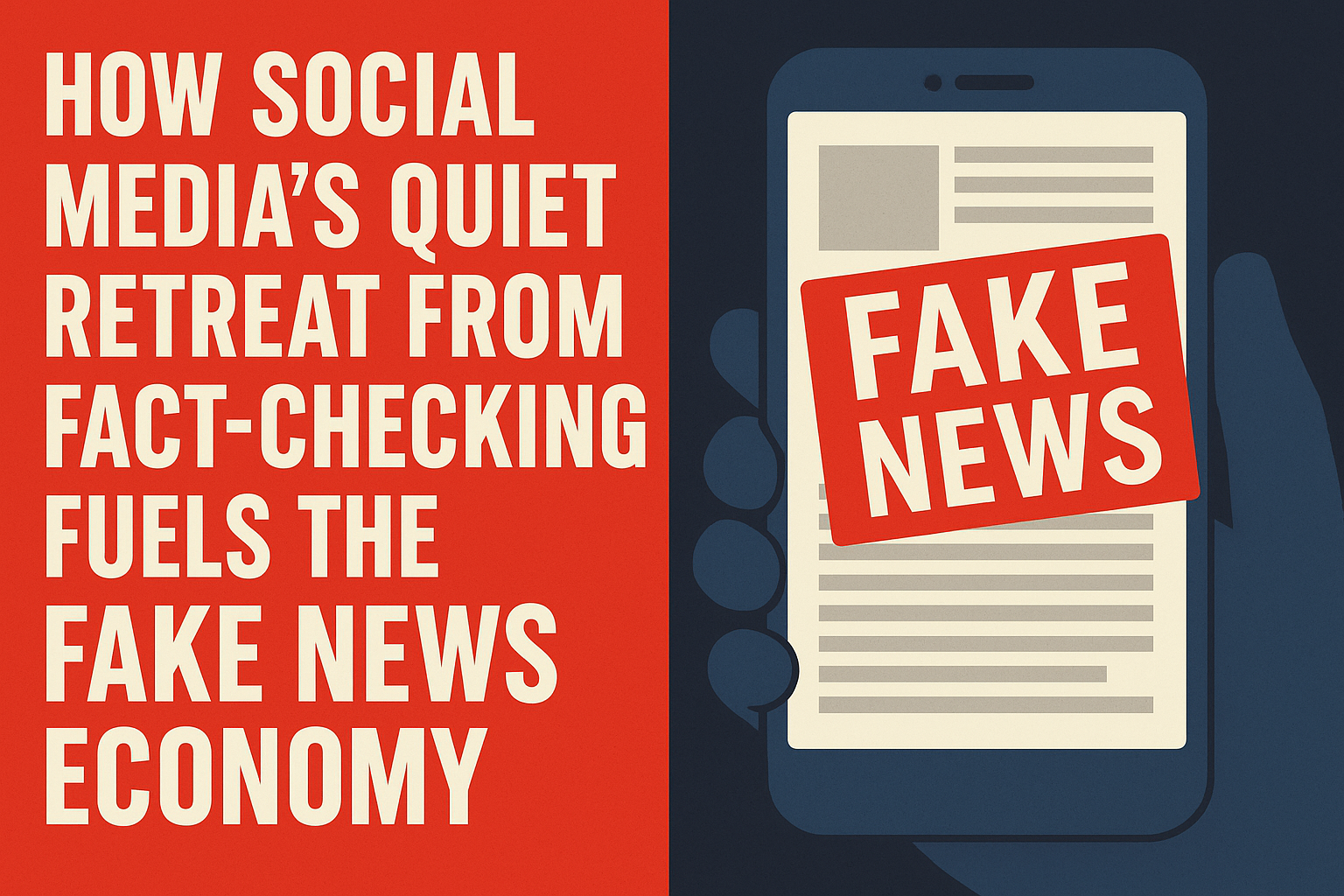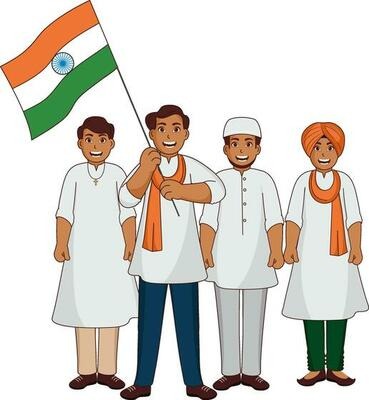In the halcyon days after the 2016 U.S. presidential election, when the world was still reeling from Donald Trump’s victory, “fake news” briefly became a problem the world seemed determined to solve. Back then, with a mixture of panic and purpose, social media companies like Facebook (now Meta) and Twitter (now X) promised a commitment to fact-checking, transparency, and some form of algorithmic responsibility. In practice, this meant third-party verification partnerships, user alerts when news was demonstrably false, and in some cases, the downranking or removal of egregiously false content.
That window has now firmly shut.
In the aftermath of Trump’s resurgence and his victory in the 2024 U.S. election, social media platforms have all but abandoned even the pretence of fact-checking. X quietly dismantled its “state-affiliated media” and “manipulated media” labels. Meta, under the cover of its latest pivot to “AI-powered engagement,” has stopped proactively flagging misinformation on Facebook and Instagram, even as it maintains a skeletal fact-checking programme that is more about optics than outcome. The stated reason is always the same: preserving “free speech” and reducing “bias.” The real reason is more prosaic: money, influence, and fear of offending political power.
What we are witnessing is not merely a step back but a systemic dismantling of the last line of defence against the industrial-scale production of disinformation. And this retreat is not without consequence.
The Rise and Fall of the ‘Fact-Check Era’
Fact-checking as a function never quite belonged to social media. The responsibility historically rested with editors, journalists and the legal infrastructure governing libel and defamation. But as Facebook and Twitter became primary gateways to news, their decision to allow — and profit from — the viral spread of lies created an ecosystem that could not be regulated by traditional methods alone.
In response to criticism, Facebook partnered with organisations like PolitiFact, Snopes, and AFP to verify claims. It would label falsehoods, reduce their visibility, and notify users who had shared or engaged with the content. Twitter similarly marked tweets with misleading information tags — notably during the COVID-19 pandemic and the 2020 U.S. election cycle.
These were imperfect solutions. Often, the labels came too late. At times, they appeared inconsistently. Still, the programmes signalled an acknowledgment that truth mattered and that platforms bore some responsibility.
But once Trump returned to power — and more importantly, once he made it clear that tech companies would pay a political price for intervening in what he calls “free speech” — the platforms began to roll back these initiatives. Elon Musk’s takeover of Twitter/X accelerated the retreat. The rebranding of the platform into a “free speech maximalist” zone has come with an implicit message: disinformation is now just another opinion.
The Retreat: What Has Been Lost
In its recent transparency updates, Meta no longer highlights the extent of fact-checking conducted on political content. The company maintains that its algorithms are now “neutral” and that user empowerment — through features like “community notes” or feedback — is the better alternative. But this is disingenuous. The real shift is from platform accountability to user burden, in a world where the average user has neither the time nor the tools to assess a claim’s veracity.
X, meanwhile, has eliminated the visibility of manipulated media tags and allows misinformation — including doctored videos — to circulate unchecked. The much-touted “Community Notes” feature, which allows users to collaboratively add context to tweets, is hardly a substitute. It is slow, often polarised, and easy to game.
This retreat has emboldened fake news factories. Without the risk of being labelled or downranked, content creators pushing politically motivated falsehoods, pseudoscience, hate speech, and communal propaganda can now operate in the open. In India, the impact is already visible: doctored videos of political leaders, communal incitement disguised as satire, and coordinated disinformation campaigns now trend with ease, often aided by bot amplification and influencer complicity.
The Political Economy of Disinformation
The crumbling of the fact-check architecture also marks a transformation in the political economy of social media. Platforms that once felt the need to be seen as “responsible” now understand that their value lies not in accuracy but in attention. Fake news, it turns out, is good for business — it is cheap to produce, incendiary by design, and algorithmically more engaging than nuance or context.
For right-wing political actors globally, this is a bonanza. The less regulation and scrutiny there is, the easier it becomes to flood the zone with disinformation. India’s IT cell-style operations, once semi-clandestine, now operate openly. The same is true of pro-Russia troll farms, anti-vaccine conspiracists, and climate deniers. Platforms now play host to their narratives without resistance, under the shield of “free expression.”
In such a landscape, even journalists and legitimate fact-checkers are under siege. Their debunkings are dismissed as “biased,” their access to reach throttled by algorithmic invisibility, and their safety jeopardised by trolling mobs. In many cases, those doing the debunking are labelled “anti-national,” “foreign agents,” or worse — a dangerous irony in countries where the actual spreaders of falsehoods are often tied to ruling party propaganda networks.
India: A Case Study in Disabling Truth
Nowhere is this transition more dangerous than in India, where social media is the lifeline of political communication and electoral strategy. The Narendra Modi government has already demonstrated a propensity to manipulate narratives through selective censorship, state-sponsored amplification, and brute force.
With Meta and X abandoning fact-checking, Indian users are now even more vulnerable to disinformation ahead of the 2024 elections. The prospect of deepfakes, communal incitement, doctored speeches, and manufactured scandals becoming routine is no longer a dystopia — it is the new normal. And with the government itself proposing to act as the final arbiter of “fake news” — through the Press Information Bureau or handpicked fact-check units — we are headed towards a regime where facts are what the ruling party says they are.
The shuttering of the Editors Guild’s fact-check initiative, the legal persecution of Alt News’ Mohammed Zubair, and the growing state hostility towards independent media have all but guaranteed that counter-speech will come with consequences. In the vacuum left behind by platform abdication, the state’s own propaganda operations flourish unchecked.
What Comes Next?
The collapse of social media’s fact-checking framework is not an isolated phenomenon. It is part of a broader global pattern: of platforms becoming pliant to authoritarian states, of political expediency trumping truth, and of attention becoming the currency of our degraded information economy.
If there is one lesson from this reversal, it is that democracies cannot outsource the defence of truth to private companies that serve profit, not principle. The next battle will not be fought through platform nudges or voluntary labels. It will require legislative intervention, public media literacy, and above all, a political will that refuses to trade truth for power.
Until that happens, the fake news peddlers will keep winning — not just the narrative war, but elections, public policy, and eventually, the very idea of democracy itself.








Leave feedback about this